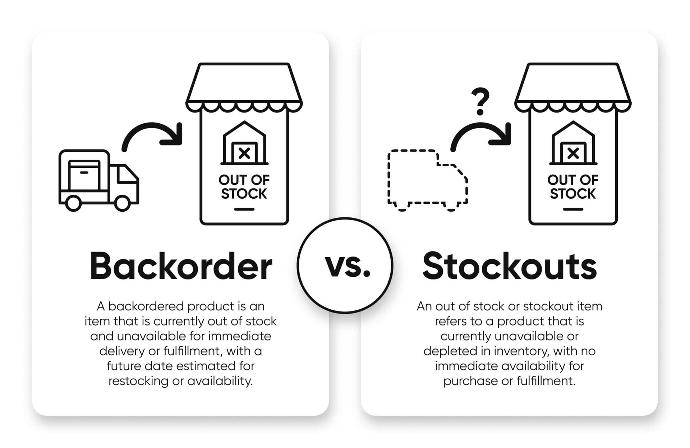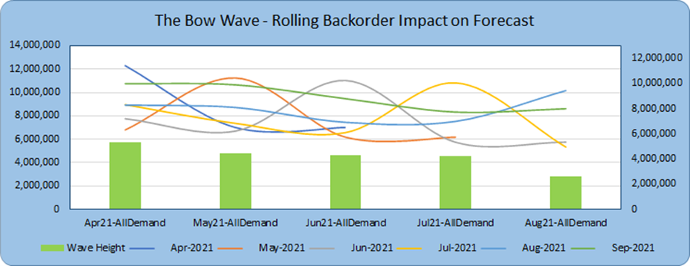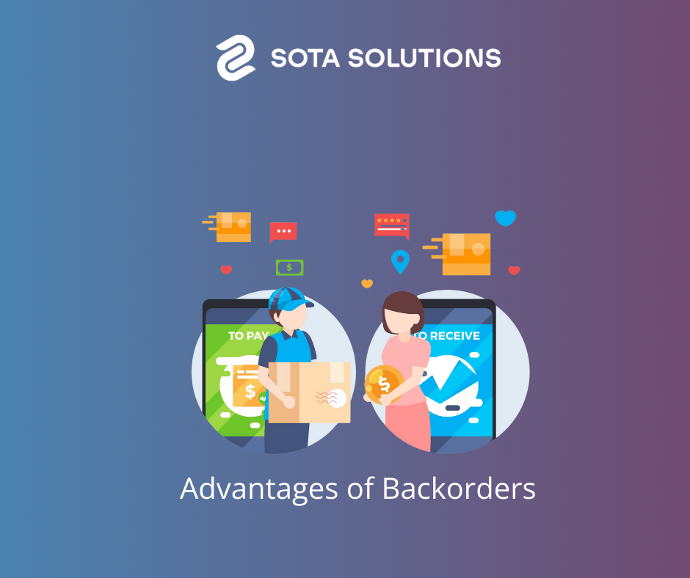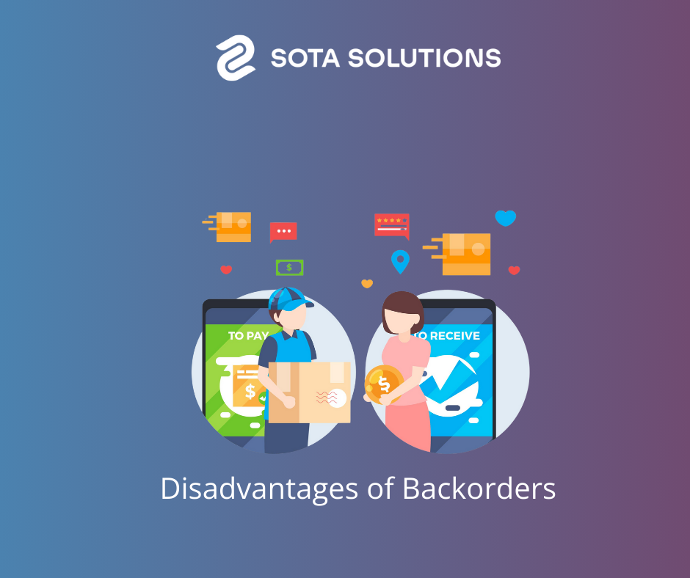The appearance of "backorders" in business is triggered by supply chain disruptions, seasonal demand shifts, and inventory mismanagement, among other factors. To address this challenge, implementing effective inventory management practices and enhancing supply chain resilience is essential. By optimizing inventory levels, improving demand forecasting accuracy, and diversifying supplier sources, businesses can minimize backorders, ensuring timely order fulfillment, and strengthening overall competitiveness.
In this blog, we will learn more about the importance feature of backorders for businesses. We will also explore how SotaERP provides a solution to manage backorders effectively. So, let's get started!

What is a Backorder?
A backorder refers to an order placed by a customer for a product that is temporarily out of stock or unavailable at the time of purchase.
Backorders serve as a commitment to fulfill the order once the product becomes available again. This practice enables businesses to continue accepting orders even when immediate inventory fulfillment isn't possible, thereby preserving customer satisfaction, preventing potential sales loss, and maintain a seamless supply chain process.
What is the Backorder Bow Wave? When does this appear?
The concept of a “Backorder Supply Wave” describes a situation in which delays in fulfilling orders lead to a buildup or “wave” of backorders in the supply chain. This phenomenon occurs when a company has difficulty meeting customer demand due to factors such as production delays, supply chain disruptions, or spikes in orders. As orders accumulate and remain unfulfilled, they create a backlog that propagates throughout the supply chain, affecting subsequent order processing and fulfillment. The metaphorical term "supply wave" represents the ripple effect of these delayed orders, which can cause operational challenges and complicate inventory management, while also affecting customer satisfaction.

The Backorder Bow Wave is identified by recurring spikes in current-month demand and consistent unfulfilled demand from previous months. Factors like canceled orders, backlog shipments, and new orders affect the wave's height and slope. Diagnosing the issue involves analyzing demand by inventory location to locate its source(s). Subsequent root cause analysis of individual orders uncovers patterns driving the backorder problem.
Explore what are the pros and cons of Backorders!
Learning about the pros and cons of backorders is essential for businesses to effectively manage inventory and customer satisfaction. By understanding the benefits, like increased sales, and drawbacks, such as potential delays, companies can develop strategies to optimize operations, minimize risks, and maintain a competitive edge in the market.
Advantages of Backorders
Let's explore some advantages of backorders in the following section:
1. Valuable Market Insights:
Backorders offer valuable market insights by revealing desired products and peak demand periods, aiding in strategic decision-making and customer satisfaction.
2. Enhanced Cash Flow
Businesses enhance cash flow by minimizing excess inventory, freeing up capital for allocation to critical business functions rather than stockholding.
3. Reduced Storage Costs
Backorders reduce storage costs, helping businesses allocate resources efficiently and minimize expenses associated with inventory management.

Disadvantages of Backorders
Here are some disadvantages of backorders:

1. Potential Loss of Business
Customers' frustration over wait times or doubts about order fulfillment can prompt cancellations, driving them to competitors for alternatives.
2. Diminished Market Share
Frequent occurrences of backorders or prolonged fulfillment times can erode customer loyalty and trust in your brand.
3. Increased Operational Complexity
Backorders introduce additional complexities to the business, particularly in the area of customer service.
Five Tips to Minimize Backorders
Minimizing backorders is doable if you use the right combination of business processes and technology. Steps you can take:
Understand customer needs: Prioritize inventory based on customer importance. For instance, restaurants prioritize staple items over specialty ingredients to avoid backorders.
Use real-time data: Ensure accurate data for timely stock replenishment and customer notifications about backorders.
Set alerts: Implement system alerts for low stock or order updates to manage backorders effectively.
Plan backups: Have contingency plans like sourcing locally or purchasing items elsewhere to fulfill orders promptly.
Diversify suppliers: Reduce the risk of supply chain disruptions by sourcing from multiple suppliers, ensuring timely orders and customer satisfaction.
Conclusion
You can maintain sales momentum even without current inventory by utilizing backordering effectively. When managed well, backordering can attract customers and minimize expenses. Through efficient inventory management, timely deliveries, and clear communication, backordering becomes a cost-effective method of selling while keeping inventory costs low.